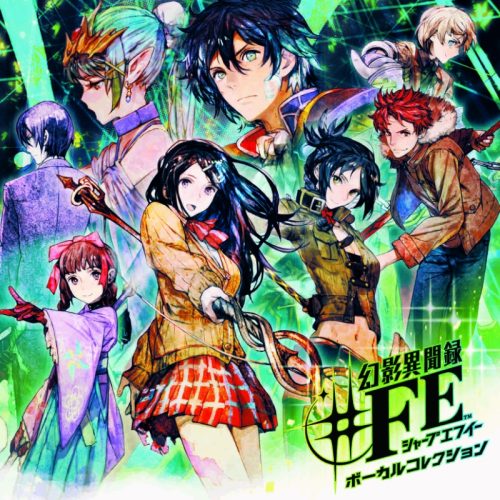
The staff at Intelligent Systems thought they were done with Fire Emblem after Awakening. While they hoped to save the franchise to some extent with it, the staff went into development with the expectation that the series would be over after Awakening.
So the development team was completely caught off-guard when they received a request from Nintendo to create a sequel! Not only that, but suddenly Nintendo was more than willing to help take the franchise to completely new, unseen directions that no one ever thought possible. Let’s take a look at how Fire Emblem slowly but surely began to transform into a major RPG brand!
Growing Pains
If there is one thing that can be said about Intelligent Systems, they are nothing if not tenacious. Rather than being content with the series’ newfound popularity, they wanted to keep expanding on what they established with Awakening. There was just one major issue: they had used up all of their ideas! According to producer Yamagami Hitoshi, there was a real issue with the staff coming up with new ways that they could continue to grow this new Fire Emblem game in a meaningful way. However, taking some inspiration from an event from the original game where you could choose between recruiting 2 different characters, the team decided that one aspect they could look into was a branching path system. Thus, the team set out to create the most expansive story in the series since the departure of series creator Shouzou Kaga.
In fact, one aspect that Intelligent Systems really wanted to address with this new game was that they hadn’t abandoned their old fans. For better or worse, Awakening’s success had changed people’s perception of the series. The more casual-friendly game additions in conjunction with the much simpler story caused series vets to grow concerned over the direction of the franchise. Not wanting to simply abandon long-time fans for a group of newcomers who may not stick around for future games, Intelligent Systems wanted to assure the old guard that they weren’t forgotten. In order to do this, they created a very clear distinction between the 2 launching versions of the game. Fates: Birthright targeted new fans with less complex maps and the ability to grind at any time while Fates: Conquest introduced several different mission types and limited players’ ability to grind. For the story, a professional writer was brought in so that the staff wouldn’t have to overextend themselves.
The critical and fan response at release was somewhat mixed, but there’s no denying the sales results. Fates is the best-selling game in the franchise to date, with over 2.8 million copies sold so far. However, not everything worked out entirely in Intelligent Systems’ favor with this. Even with attempts to create a compelling story, old time fans who were used to the series’ rather grounded approach to character design and writing were quite dismayed over the sheer abundance of fan service. Despite the rather grave tone of the story, it was really difficult to take it all that seriously with your curvy older sister Camilla practically begging to take baths in the middle of wartime.
The First Spinoff
We’re getting a little ahead of ourselves here, though. Even though Fates would see release first, there was actually another project that was frequently tossed around before even Awakening began development. Producer Ando Kaori had apparently wanted to make a crossover happen between Pokemon and Fire Emblem from as far back as 2010, but was shot down when Nintendo informed her they were already crossing over Pokemon with a separate long-running strategy game franchise (Koei-Tecmo’s Nobunaga’s Ambition). It’s said that after this, Ando created a new proposal to pitch to Atlus for a Shin Megami Tensei crossover. As for why she immediately went from a franchise known for adorable, whimsical creatures to one known for demonic hellspawn is anyone’s guess. We have to imagine the original concept had some emphasis on recruiting characters in the middle of battle, as this is a core mechanic of both franchises.
Nonetheless, Atlus did eventually accept the proposal once they had some room in their schedule. The game was announced almost as soon as development started in 2013, simply as “Fire Emblem x Shin Megami Tensei” while using stock images of various games from both franchises.
This incredibly early announcement ended up doing more harm to the project than good. Much like how Awakening was altering people’s perceptions of the franchise, so too was this collaboration with Shin Megami Tensei. Long-time fans of Fire Emblem were absolutely thrilled with this out-of-nowhere announcement, as for all their concerns about the direction of Fire Emblem with Awakening, Shin Megami Tensei was a franchise that could ground Fire Emblem again. After all, Shin Megami Tensei was known for its rather brutal and philosophical world perspective. Surely this new project would bring Fire Emblem back to its roots, right?
So, when Nintendo unveiled Tokyo Mirage Sessions to the world in 2015, people were none too happy. Rather than being a story about apocalyptic wartime against demons, the collaboration turned out to be a Persona game about pop idols where the Personas were Fire Emblem characters. The 180 from people’s expectations completely destroyed the trust fans had in the title, as it made the series look like it was going into full pander mode. When it actually released in the West in 2016, the response was actually quite positive and it ended up with solid word of mouth. However, by then, it was too late. The one-two punch of the shock of the reveal and following so close to Fates had done its damage.
A Hero Will Save Us
In addition to growing fan resentment, there was just one more issue threatening Fire Emblem’s growth. With the exception of a brief reappearance on consoles from 2005-2007, the series was now largely known as a handheld franchise. Even with Fates’ financial success, it was growing increasingly obvious that 3DS was on its way out and that Nintendo was about to rethink its development strategy. Mobile gaming appeared to be the wave of the future.
But, as luck would have it, the mobile market was also proving to be pretty fertile ground for multimedia franchises with extremely niche but loyal fanbases. Type-Moon’s Fate/Grand Order had released in just December of 2015 and was proving to be a massive success. Around April of 2016, Nintendo penned a multi-game deal with experienced mobile developer DeNA to make games based on Mario, Animal Crossing, and, strangely enough, Fire Emblem.
Whoever pushed to have Fire Emblem included in this deal along with 2 of Nintendo’s most popular franchises had some incredible foresight. Heroes is to-date the biggest mobile success the company has seen, handily beating out the company’s own mascot. Much like the aforementioned Fate/Grand Order, Awakening draws from the extensive history of Fire Emblem, drawing in both fans of newer titles and those nostalgic for older games in the franchise. People are willing to throw down big bucks just to see their favorite games referenced… along with some suggestive costumes for their favorite characters.
Final Thoughts
We’re almost to the end of Fire Emblem’s extensive development history! Join us next time where we’ll cover where the series is at today!
Recommended Post
The History of Fire Emblem Part 4: The Potential Realized
Recommended Post



